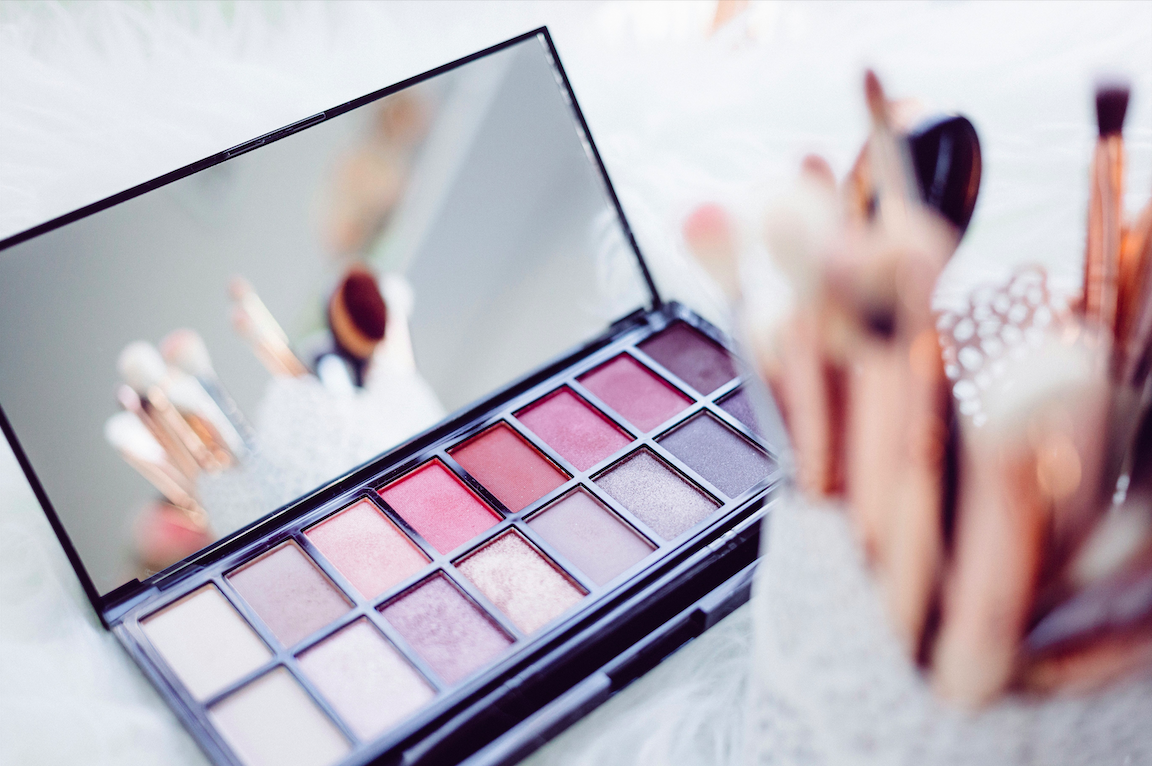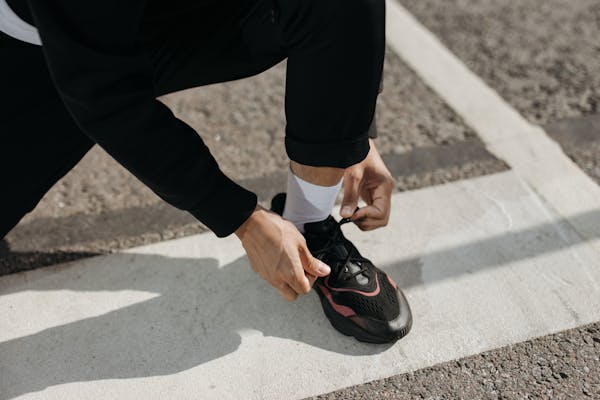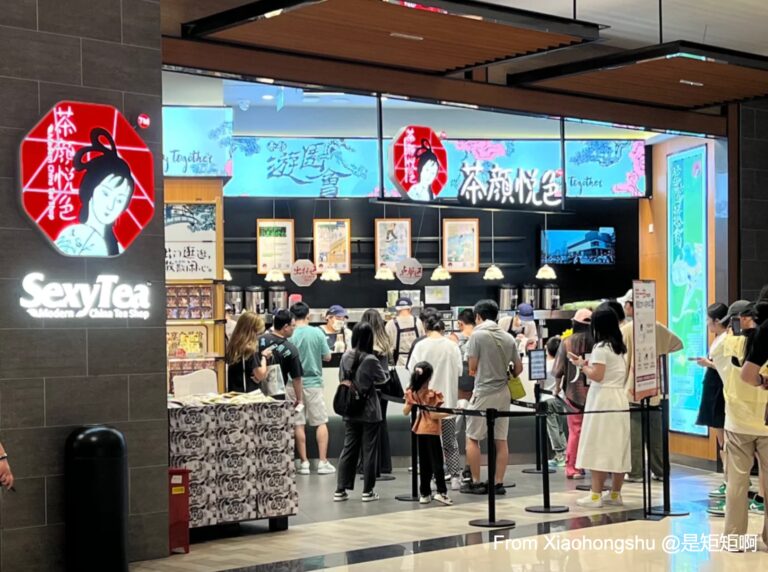In the multifaceted Chinese cosmetics market, the makeup segment occupies a significant share of the transactions. In 2023, the retail cosmetics industry in China reached RMB 414.2 billion (USD 57.53 billion) and a growth rate of 5.1%. Notably, Chinese makeup brands are progressively gaining ground, significantly increasing their share which doubled to 28% in 2022 from 14% in 2017 among the top 20 color cosmetic brands in the country.
Download our report on Chinese beauty consumer pain points
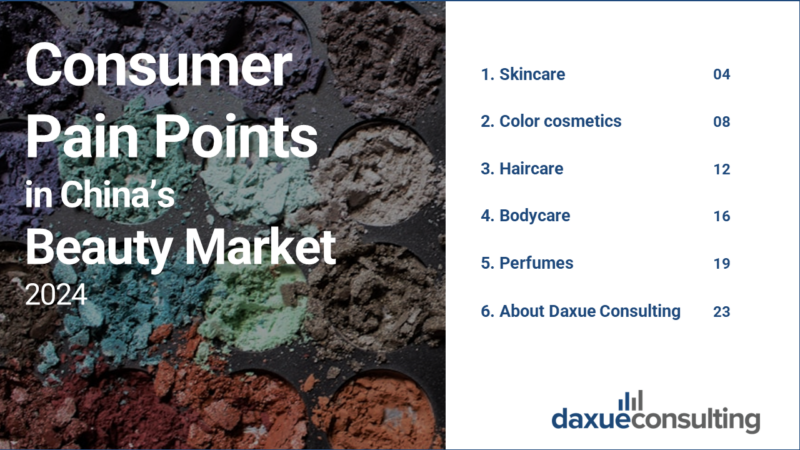
Shifting landscape: The rise of Chinese makeup brands
The Chinese makeup market is a diverse and competitive landscape without a single dominant brand. Foreign and domestic brands continuously compete for market share, with a notable rise in domestic players in recent years. This trend is evident in the departure of some foreign companies, like the budget-friendly American brand E.L.F. which exited the market in February 2023.
Two factors contribute to the decline of international brands and the rise of domestic ones in the Chinese makeup market.
The Guochao trend
Chinese consumers are increasingly drawn to products that embrace and celebrate Chinese culture (Guochao). This translates to a preference for locally-made goods perceived to be better suited to their features and needs which promotes the attractiveness of Chinese makeup brands.
Lack of adaptation
International brands often struggle to adapt their offerings to the unique preferences of Chinese consumers. While Western markets may favor bold makeup, Chinese consumers generally prefer a more natural look. This includes an emphasis on pale, glowing skin and subtle eye makeup. Unlike Western brands, J-Beauty and K-Beauty have emerged as formidable contenders in China, especially among younger generations. This surge in popularity can be attributed to their emphasis on natural aesthetics and cutting-edge formulations. Yet, despite their appeal, J-Beauty and K-Beauty products tend to be pricier than local Chinese brands due to their established reputations and the use of imported ingredients.
Deeper insights: Diving into popular Chinese makeup brands
Proya: Bridging tradition and innovation
Established in 2007, Proya (珀莱雅) has become a leading force in the Chinese beauty and personal care industry. The brand offers a diverse selection of products, encompassing skincare, makeup, haircare, and body care, catering to various needs. Not only is Proya a flagship brand, but it also boasts several successful sub-brands like Timage (彩棠), Off&Relax, HAPSODE, and CORRECTORS.
Proya’s remarkable growth trajectory is evident in its impressive sales figures. During the 2023 Women’s Day (March 8th), Proya witnessed a surge of 56% in sales. Notably, Timage, under the Proya umbrella, secured the 10th spot amongst the best-selling makeup brands during Douyin’s 2022 Double Eleven event, highlighting its widespread popularity. Timage’s Shinning Contour Palette also starred in an article by Vogue.
One key contributor to Proya’s success lies in its strategic marketing approach. The brand leverages online and offline channels, effectively engaging customers through various events and campaigns. Additionally, Proya has strategically positioned itself as a brand offering high-quality, affordable makeup products that resonate with Chinese aesthetics.
The founder, makeup artist Tang Yi, played a pivotal role in shaping Proya’s identity. He pioneered the “blank” style, inspired by the traditional Chinese painting technique “liubai” (留白). This style involves applying light makeup, strategically leaving “blank” areas to emphasize natural facial features, and offering a subtle yet impactful look.
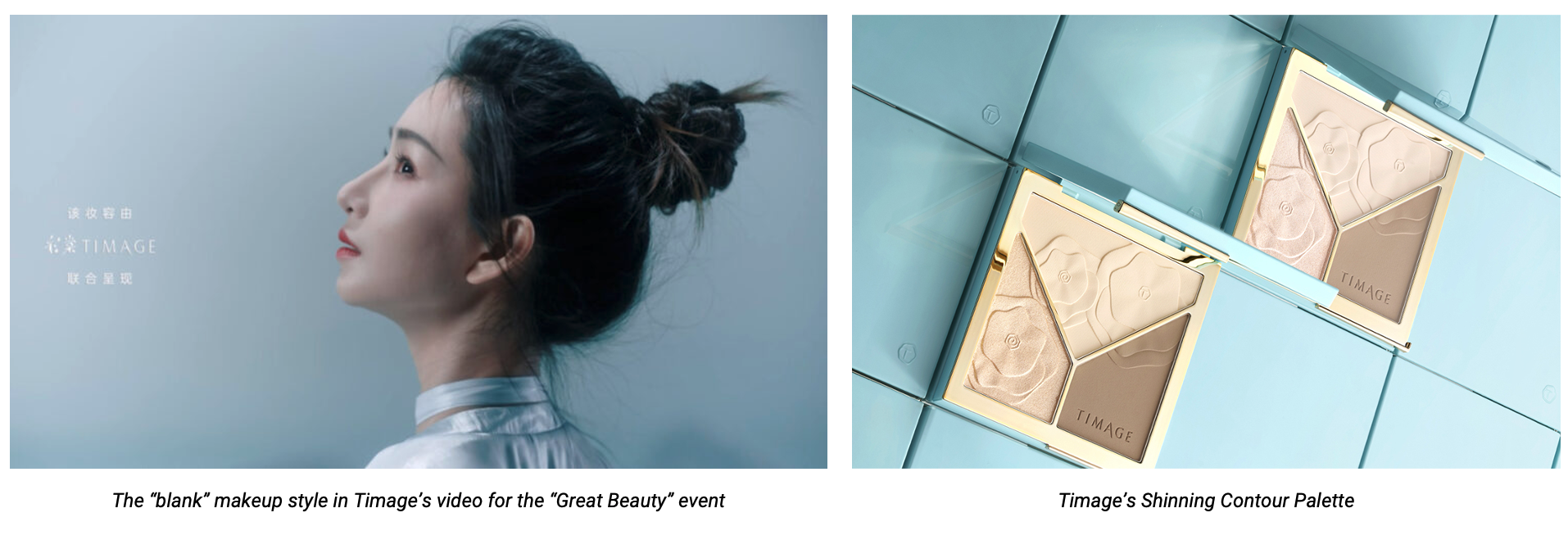
Moreover, Proya prioritizes research and development (R&D). According to the company’s 2022 financial report, the brand increased its spending on basic, applied, and clinical research by an impressive 67.15% year-on-year, totaling RMB128 million (USD 17.7 million). This commitment to research aligns perfectly with the growing trend in China, where consumers are increasingly drawn to products focused on high-quality, “ingredient-conscious” formulations.
Florasis: Preserving heritage through beauty
Another hot brand in the makeup sector surely is Florasis (花西子), which in recent years has also been capturing the attention of the international audience with its products being featured in Vogue and Harper’s Bazaar. Founded in 2017 by Ray Zhang, the brand is known for its exquisite packaging and high-quality products, which are inspired by traditional Chinese culture and art. Its packaging is also one of the things that sets it apart from other makeup brands. Florasis’ products also make great gifts, as they are both beautiful and practical.
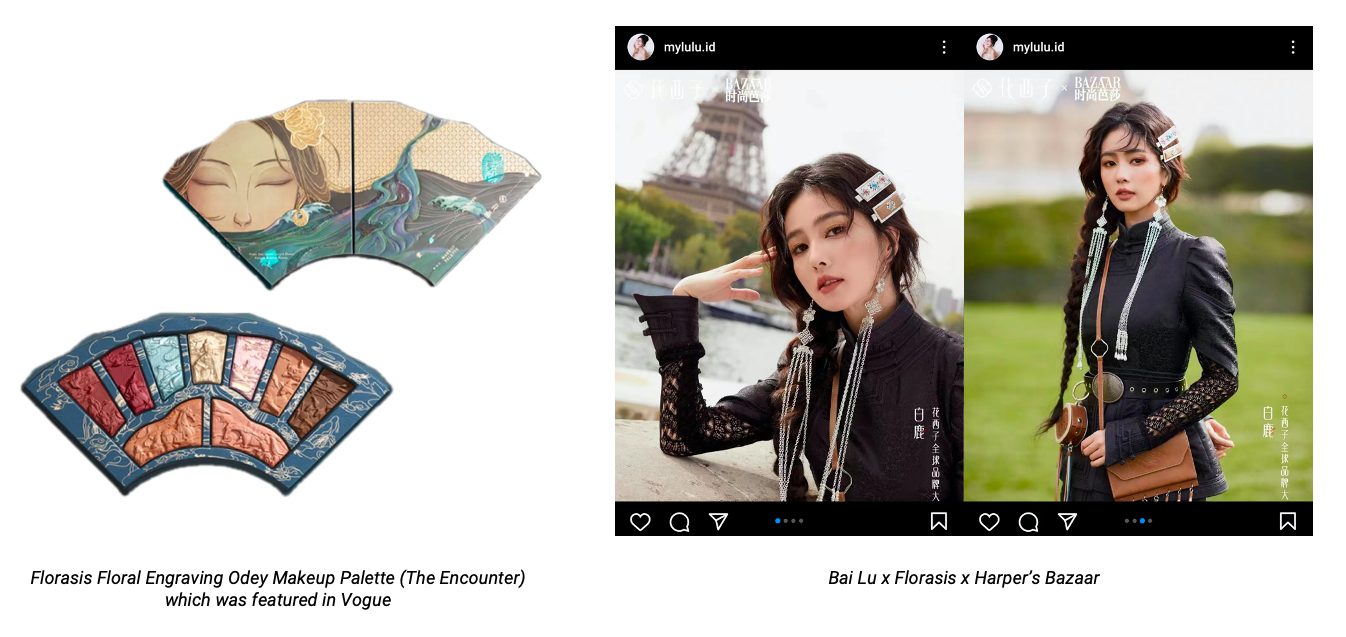
The products are also formulated with natural ingredients and are cruelty-free. Thanks to their uniqueness, they successfully ranked 2nd in the 2022 Double Eleven on Douyin and are now among the most popular Chinese brands both inside and outside the country. The company is reported to reach a revenue of more than RMB 4 billion in 2022.
The brand also received several awards from Vogue. Florasis’ Flawless Jade Series won the French Design Award 2023 Gold Award for its minimalist design inspired by Chinese landscape architecture. Their Blooming Rouge Ultra Smooth Satin Liquid Lipstick in Gentle Strength won the Vogue C-Beauty Awards 2023 Color Development Award for its traditional Chinese color inspiration and embodiment of Chinese heritage.
Maogeping: Embracing Asian beauty with light and shadow
Maogeping (毛戈平) stands as a dominant force within China’s high-end makeup market, offering a diverse range of products priced between RMB 260-880 (USD39-122). The brand was established in 2000 by the esteemed makeup artist Mr. Mao Geping, a pioneer in the art of light and shadow makeup, a technique that he has perfected throughout his career. This signature style, which involves the strategic use of light and shadow to reshape facial features and enhance natural beauty, forms the core of the Maogeping brand’s aesthetic philosophy. Specifically designed to suit the unique characteristics of Asian skin tones and features, Maogeping’s makeup products cater to a growing segment of beauty consumers seeking sophisticated and natural-looking makeup.
Due to the founder, Mao Geping’s, personal popularity and senior industry experience, the products possess a certain advantage in the beauty industry. Moreover, with the products jumping into the Guochao trend, by the end of 2022, the brand had established a widespread presence across China with 367 counters. It achieved a revenue of RMB 1.68 billion and a profit of RMB 349 million, solidifying its position as a major player in the domestic high-end makeup market.
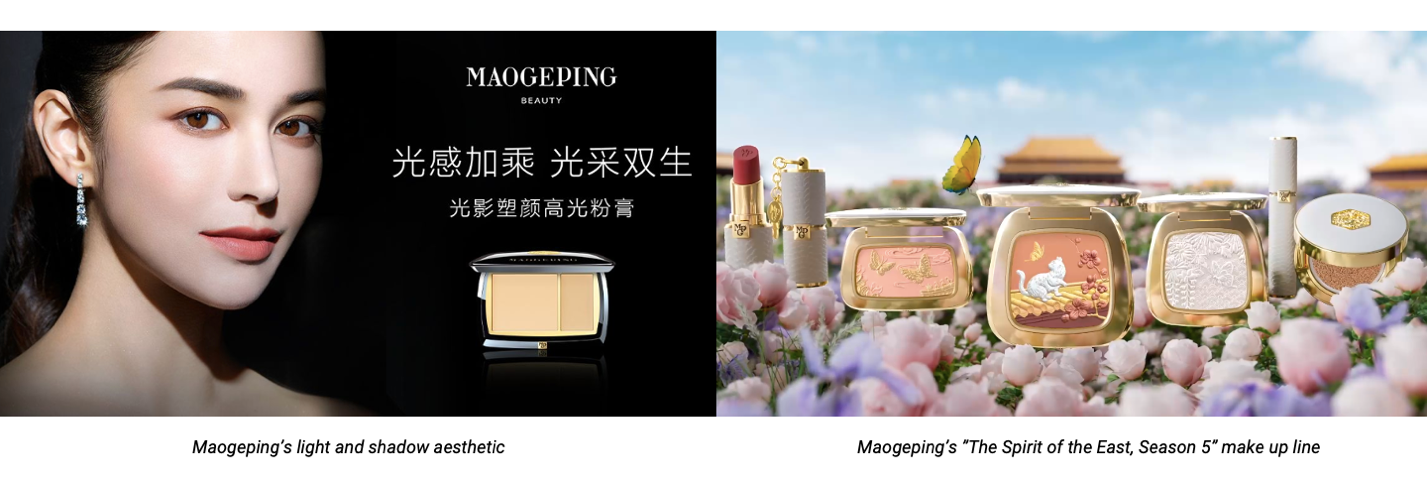
Carslan: When affordability meets quality
Carslan (卡姿兰), established in 2001, is a major player in the Chinese cosmetics scene. They have carved a niche for themselves by offering high-quality makeup, skincare, and beauty tools at accessible prices. Despite the focus on affordability, Carslan prioritizes quality. They maintain a good reputation for using reliable ingredients and upholding manufacturing standards. This combination of affordability, quality, and trendsetting products has solidified Carslan’s position as one of the biggest Chinese makeup brands in the country’s beauty market. The brand has over 8,000 outlets in 31 provinces and 2,000 cities in China. According to data, Carslan’s product sales on JD.com in October 2023 reached RMB 28 million, securing the third position, just behind established luxury brands Yves Saint Laurent and Dior.

Finding the sweet spot: Balancing marketing and quality in China’s beauty industry
China’s saturated beauty market presents a unique challenge for brands: standing out in a sea of competitors. While marketing undoubtedly plays a crucial role, neglecting product quality can lead to a swift downfall, as exemplified by the case of Perfect Diary (完美日记).
Perfect Diary’s rapid rise serves as a cautionary tale. Through strategic marketing campaigns, collaborations with influential KOLs, and a focus on younger generations, they dominated the market. However, their heavy emphasis on marketing over R&D resulted in perceptions of subpar product quality.
This perception, coupled with price increases, sparked consumer backlash. The infamous “Xiaoxigen” (小细跟) lipstick, priced at RMB 79.9, became a symbol of the perceived disconnect between marketing hype and actual product value. Perfect Diary’s story highlights the importance of striking a balance between effective marketing and investing in quality products.
Navigating the Chinese beauty market: The rise of Chinese makeup brands
- The Chinese makeup market witnesses a surge in domestic brands due to factors like the Guochao trend and international brands’ struggle to adapt to Chinese preferences.
- Proya, a leading Chinese makeup brand, thrives due to its strategic marketing approach, product diversity, and commitment to R&D, offering high-quality, affordable products aligned with Chinese aesthetics.
- Florasis stands out with its emphasis on traditional Chinese culture, exquisite packaging, natural ingredients, and cruelty-free formulations, leading to both domestic and international popularity and recognition.
- Maogeping specializes in high-end makeup catering to Asian features, leveraging the founder’s expertise in light and shadow makeup techniques, solidifying its position in the domestic market.
- Carslan balances affordability with quality, offering trendsetting products at accessible prices, earning a strong presence in China’s beauty market with over 8000 outlets nationwide.
- Brands must strike a balance between effective marketing and investing in product quality to avoid consumer backlash, as seen in the case of Perfect Diary, which prioritized marketing over R&D, leading to perceptions of subpar product quality.


